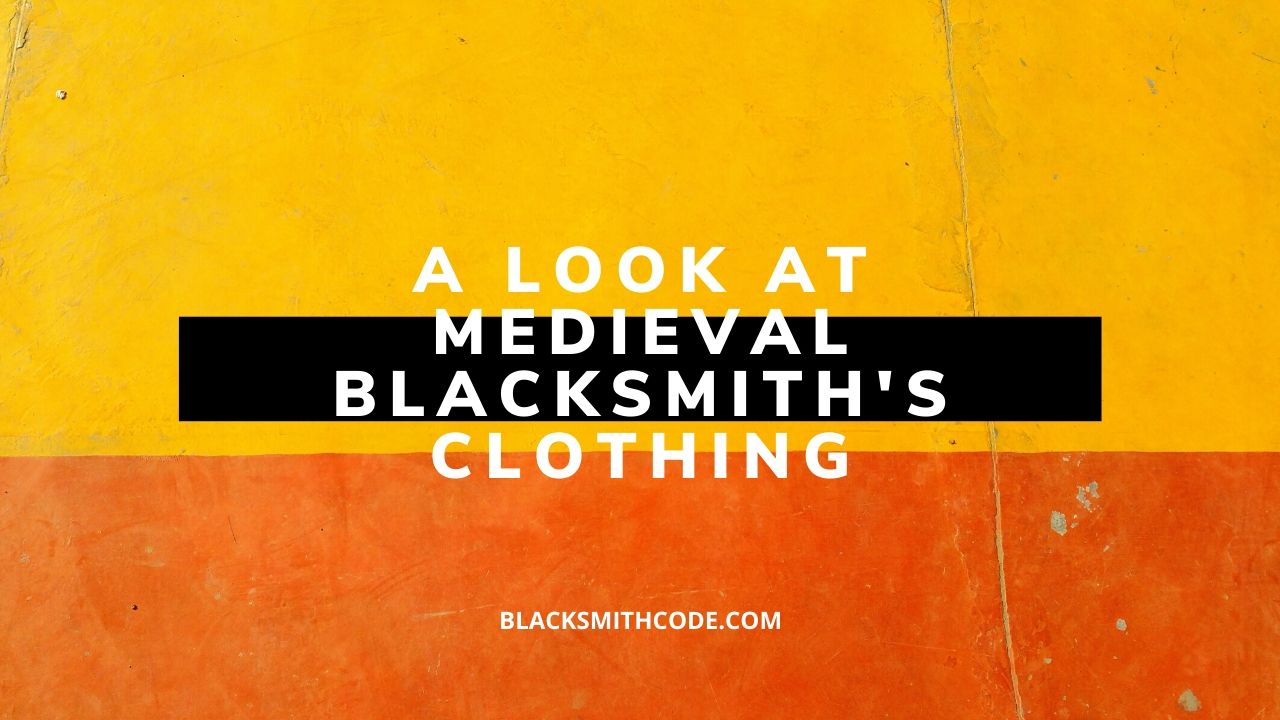The medieval period, also remembered as the Middle Age is one of the most significant periods in blacksmithing history. Blacksmiths in this period usually do strenuous work and typically have work for long hours. Medieval blacksmith clothing is one of the signs of identification and it also helps with protection.
Like most other people that do strenuous work and also work for long hours in this medieval time, blacksmiths often wear clothes that protect them and allow them to move freely. As much as the medieval blacksmith clothing is similar to that of other working class, there are still some peculiarities in that of blacksmiths.
The primary peculiarity of the medieval blacksmith clothing is that it protects them from the hazards of their profession. Likewise, blacksmiths at this time make use of materials available at that time. There are generally two classes of people, at that time, which are the upper class and the peasants or lower class.
While the upper class can afford a wide range of fabrics and other clothing materials, the lower level can only afford a few. The blacksmiths clothing in the medieval period are;
Apron
The principal aim of the apron used by blacksmiths in this period is to serve as protection for the blacksmiths. The primary material that blacksmiths use during this period is leather. The leather apron used during this period is very similar to the ones that are widely in use by the modern-day blacksmiths. The leathers are basically from cowhides and are attached primarily to the head and the waist.
Belts
Belts are also part of the original accessories of the medieval blacksmith clothing. As at this time, it was not called belts; it was known as the girdle. The straps during this period are from sturdy leathers. The primary aim of the girdle or belts is to help blacksmiths keep some handy tools close to them.
Boots
The blacksmith’s boots during this age are often made from leather, and its primary aim is to protect the foot from professional hazard. However, the upper class wore something more distinct from the lower level. Their own shoes are usually more styled and expensive. While the boots used by the lower class have round toes, the upper class uses one that has pointed head. Nevertheless, both types of boots have the fundamental purpose of protecting the foot.
Head, Neck, And Hand Coverings
Aside from the fact that head and neck coverings are significant elements of fashion in this era, it is also performing protective functions for blacksmiths in the medieval blacksmith clothing. The head and neck coverings are hats, veils, caps, and so on. Just like the leather boots, the head and neck coverings might also vary with class. They, however, still perform the same functions. For instance, hats primarily protect the blacksmiths while working close to the open flame. The hand coverings are usually gloves that are typically from leather materials.
Conclusion
The medieval period is a vital one in the history of blacksmithing. Despite the segregation of class, the blacksmiths maintain almost uniform clothing that primarily serves as protection. The medieval blacksmith clothing includes the head, neck and hand coverings, boots, breeches, and aprons.

